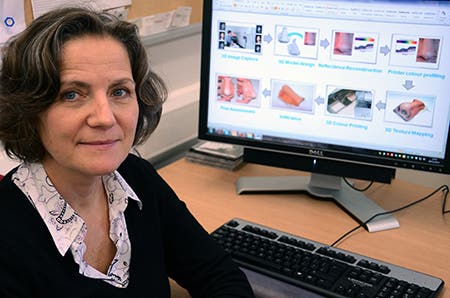Apparently, there’s no limit to what you can develop via 3D printing. Researchers at the University of Liverpool are currently working towards developing synthetic skin that can be produced on a 3D printer and matched to a person based on their age, gender and ethnic group.

Dr Sophie Wuerger: “This science is at an early stage, but the advantages of 3D printing for medicine are enormous”
3D printing may be in its very early stages, but it’s still made quite an impact, scientists already demonstrating possible applications in space travel, geology, design, and most importantly – medicine. As printers become more and more cheap and can be programmed with almost any variation of designs and without the need from any actual donated organic matter, more and more doctors are turning to 3D printing. However, so far, attempts of printing skin have been unable to produce a product that looks realistic enough to be indistinguishable from the real thing.
However, researchers from Liverpool accepted the challenge. Working alongside colleagues at the University of Manchester, they are now developing skin modelling techniques that can copy a person’s skin so that it appears natural, no matter from what angle (and at what light) it is looked at.
The main problem is the lack of homogeneity: it would be fairly to print skin for a uniform hand, but this does not reflect the diversity of the real-life surface. A real hand (or any body part for that matter) is patterned by freckles, veins and wrinkles, it has slightly different colors and textures – and it’s this diversity which makes it so hard to replicate.
Scientists are designing a 3D camera technology and subsequent image processing that can almost exactly match an individual’s skin tone and skin texture under varying light sources – the procedure will then have to be conducted on an individual basis, so that each person’s synthetic skin is bespoke – finding sort of a ‘background level’ for any individual in case.
Working on a parallel level, researchers are also constructing a database which can be used more generally. This bank would then be used in more remote areas or in countries where access to calibrated 3D cameras is difficult. The idea is that since 3D printers are becoming so commonly accessible, any doctor with access to the database and a printer could still produce an adequate skin match.
Dr Sophie Wuerger from the Perception Group in the University’s Institute of Psychology, Health and Society said:
“This science is at an early stage, but the advantages of 3D printing for medicine are enormous. “The human visual system is extremely sensitive to small distortions in skin appearance, so making a convincing synthetic version will be essential whether this technology is used for emergency or cosmetic medicine.”
The project is estimated to last three more years.









